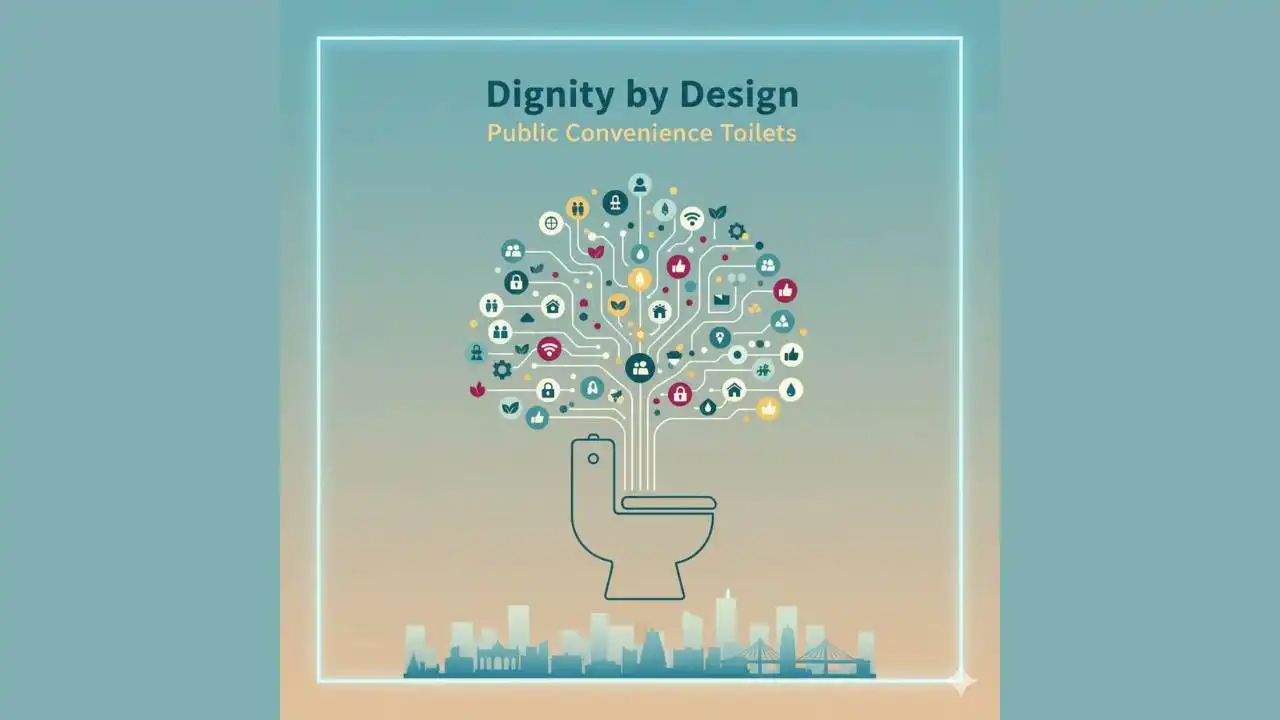Once upon a time, the phrase public convenience in Indian cities was an oxymoron. Public toilets were the last place anyone wanted to step into—dirty, unsafe, inaccessible. For women, children, the elderly and the disabled, it was often not even an option. Using one meant brushing against indignity, not relief.
But Chennai is changing that story.
Through the Greater Chennai Corporation’s (GCC) ambitious DBFOT Public Convenience Toilet (PCT) project under the Hybrid Annuity Model, the city is rewriting the psychology of sanitation. This is not just about bricks and mortar. It is about dignity, behaviour, and the quiet revolution of how citizens see themselves in their own city.
Chennai is leading the way in yet another initiative.
The Concession that Sparked a Shift
The contract—public toilets across Ambattur (Zone VII), Anna Nagar (Zone VIII), Teynampet minus Marina (Zone IX), and Kodambakkam (Zone X)was not just a civil work tender. It was a carefully designed concession agreement, where the private concessionaire—Urban PCT Three Private Limited, backed by FERRGRA is deployed to not only build in 365 days or retrofit units but also operate and maintain them for eight years.
That insistence on lifecycle responsibility is the hinge. The Authority (GCC’s Special Projects Department) set standards, enforced Key Performance Indicators (KPIs), and introduced anIndependent Engineer to audit quality, safety, and transparency – and provide solutions.
The result? For the first time, accountability in sanitation infrastructure was built into the contract, not left to fate.
From Avoidance to Acceptance
Behavioural psychology explains why citizens historically avoided public toilets: disgust from poor upkeep, fear from unsafe spaces, alienation from non-inclusive designs, and mistrust from lack of accountability.
The DBFOT model addresses these one by one:
- Cleanliness as design: bright lighting, ergonomic layouts, proper ventilation.
- Trust as transparency: QR codes for feedback, CCTV for safety, janitors in uniforms, dashboards checked by GCC.
- Inclusion as principle: gender-segregated, child-friendly, transgender-friendly, and PwD-accessible cubicles.
This is behaviour engineering. Each element is a nudge to replace avoidance with acceptance.
From Needs to Behaviour: The COM-B Lens
Public health science shows that behaviour change isn’t automatic. It happens when three forces align—Capability, Opportunity, and Motivation (COM-B).
• Capability: Citizens must know facilities exist and trust that they are safe to use.
• Opportunity: Clean water, non-slip floors, ramps, pad disposal bins, and CCTV give people the practical means.
• Motivation: A positive, respectful experience makes them come back—and tell others.
Chennai’s DBFOT model strengthens all three pillars. It doesn’t just provide toilets; it engineers behaviour.
The Mirror of Governance
There is a concept in cognitive science called embodied cognition—our environment shapes how we think.
A woman walking into a safe, well-lit toilet in Pondy Bazaardoes not just feel relieved. She feels respected. A child in Ambattur does not just wash his hands. He sees the state investing in his dignity. A janitor in Anna Nagar does not just wear a uniform. He wears pride.
That is governance reflected in porcelain and steel.
From Transaction to Transformation
Toilets were once seen as transactional utilities. Chennai’s model reframes them as transformational symbols.
- Workers gain dignity with PF, ESIC, and scheduled skill training.
- Citizens gain ownership with grievance redressal and real-time complaint closures.
- The state gains credibility by enforcing service-level KPIs with penalties for lapses.
The message is clear: this is not an infrastructure project. It is a cultural reset.
The Flush That Cleanses a City’s Self-Image
Sanitation has always been India’s awkward conversation. But Chennai shows it can be a confident one. With every seat retrofitted, every cubicle lit, and every complaint resolved, the city chips away at the old mental schema that said, “public toilets are for the desperate.”
They are now for the dignified.
Chennai’s DBFOT experiment is still unfolding, but its psychological dividend is already visible. People are using the toilets. More importantly, they are trusting them.
When a city invests in dignity, it invests in its own citizens’ self-image. That is the real story behind the flush.
